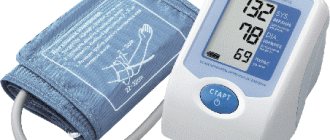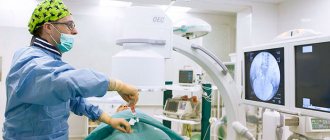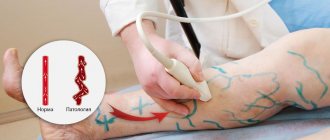Lymphedema is the accumulation of excess fluid between tissues. Most often, the disease affects the extremities (upper and lower). Lymphedema is associated with disruption of the function and integrity of the lymph nodes and vessels, which play the role of a filter in the body and are an important part of the immune system. Lymphedema leads to severe swelling of the arms and legs, which causes many problems: difficulty in moving, and the affected tissues are more susceptible to severe inflammation and infection. Treatment of the disease must begin at the first signs. In this case, the likelihood of inhibition and elimination of the pathological process increases significantly. Only a specialist can recognize lymphedema and prescribe adequate treatment.
Treatment of lymphedema in Moscow is performed at the Yusupov Hospital. There are doctors here who have extensive experience in eliminating such ailments. At the Yusupov Hospital, lymphedema is treated using effective therapy methods that help improve the patient’s condition and restore the functioning of the body’s systems.
Causes of lymphedema
Lymphedema occurs as a result of damage or removal of lymph nodes and blood vessels. This is a fairly common disease, the onset of which is more often found at a young age. There are two types of lymphedema:
- primary (congenital). Occurs in 6% of cases. Caused by congenital damage to the vessels of the lymphatic system;
- secondary (acquired). Occurs as a result of rupture, blockage or removal of lymphatic vessels.
Secondary lymphedema occurs in more than 90% of cases. Its development is provoked by surgical interventions, trauma, malignant neoplasms, vein thrombosis, and radiation therapy.
Patients who have undergone the following procedures are at risk of developing lymphedema:
- mastectomy with removal of lymph nodes;
- lumpectomy with removal of lymph nodes;
- combined cancer surgery;
- surgical treatment of testicular and prostate cancer;
- radiation therapy in the area of the lymph nodes;
- liposuction.
Lymphedema may appear several months after surgery or even several years later. Therefore, it is important to undergo preventive examinations on time, especially for patients who have undergone cancer treatment.
Lymphedema is quite common in women after mastectomy. However, this disease also affects men. There is a type of pathology called scrotal lymphedema. It is formed as a result of inflammatory disease of the lymph nodes of the groin area. As a result of pathology, dense formations appear in the scrotum area, deforming the organ and disrupting its functions.
Prevention
It is unlikely that lymphedema can be prevented. There is no vaccination against this. However, the risk of developing the disease can be minimized by eliminating risk factors:
- if you are overweight, you should definitely seek medical help to eliminate obesity;
- if you are prone to edema, it is especially important to follow a healthy diet;
- playing sports activates muscle activity, increasing lymph flow;
- stress contributes to the narrowing of the lymphatic and circulatory pathways, so stressful situations should be excluded.
Timely treatment of concomitant diseases is of great importance in the prevention of lymphedema. It is also recommended to eliminate bad habits and lead a healthy lifestyle.
Lymphedema of the lower extremities
Primary lymphedema of the lower extremities usually begins in the foot. It is characterized by dense swelling in the area of the toes, dorsum of the foot, and ankle joint. Secondary lymphedema is localized in the proximal limb and gradually spreads to the peripheral parts. At the initial stages, the skin is pale in color and painless. When pressed, a small depression appears in the skin, which quickly recovers. Over time, the swelling increases, skin folds disappear, and the so-called “elephantiasis” begins to form, when the leg loses its natural shape, acquiring a cylindrical shape.
Before starting therapy, it is necessary to make sure that the cause of edema is lymphedema of the lower extremities. Treatment begins with differential diagnosis. The disease is distinguished from edema associated with varicose veins, as well as damage to the kidneys and heart. To do this, the doctor evaluates the patient's medical history and prescribes an examination.
Timely treatment will help avoid harmful consequences
It is necessary to predict complications of the disease based on the causes of its occurrence and stage. Usually, if you have a hereditary predisposition to lymphedema, you can reduce your chances of developing it in simple ways. For example, avoid being overweight. Then the risk of inheriting the disease is reduced from 50% to 25%, which, you see, is a very significant result.
Timely consultation with a doctor and timely treatment also reduces the chances of an unfavorable prognosis by almost 5 times. This is a compelling reason to protect yourself.
Phlebologists at the Arbatsky CDC help patients cope with the disease in the initial stages of the disease, almost until complete recovery. There is all the necessary modern equipment for diagnosis and effective therapy.
Back to articles
Lymphedema of the upper extremities
Lymphedema of the arm after removal of the mammary gland is quite often observed in women who have undergone a similar operation. Lymphedema after mastectomy develops as a result of disruption of the integrity of the channels through which fluid passes. After surgery, the patient is required to undergo mandatory examination at certain intervals for timely diagnosis of lymphedema. Redness of the skin or pain in the arm may indicate the onset of inflammation, so the doctor should offer adequate treatment as soon as possible.
Symptoms of lymphedema of the upper extremities may include:
- swelling of the fingers, forearm, shoulders, chest;
- feeling of heaviness in the hands;
- change in skin tone;
- stiffness in joints, loss of flexibility;
- tightly fitting clothes or jewelry (rings, watches) in a certain place on the hand (and the item is of a suitable size).
Therapy begins after confirmation of the diagnosis of upper limb lymphedema. Treatment is determined by a specialist based on the patient’s medical history, the degree of the disease and the individual characteristics of the person.
What is hand lymphostasis?
Lymphostasis of the hands is a serious disease.
Due to a violation of the outflow of lymph, excessive accumulation of intercellular fluid rich in protein occurs, resulting in swelling of the soft tissues of the upper limb. With lymphostasis, there is an increase in the volume of subcutaneous fat due to edema. In the absence of proper treatment, gradual sclerosis and tissue fibrosis occur. If you do not seek professional help from qualified specialists, the disease progresses: swelling increases, changes appear on the skin in the form of hyperkeratosis, papillomatosis, maceration and ulceration, and infection occurs (nail and skin fungus, erysipelas).
Treatment of lymphedema
Treatment of the pathology usually follows a similar scenario, regardless of whether the lymphedema of the lower extremities is primary or secondary. Treatment of this pathology will consist of a set of measures that can improve the flow of fluids in the body and increase its protective functions.
Conservative treatment of lymphedema of the arms and legs will include the following elements:
- lymphatic drainage massage;
- diet;
- physiotherapy;
- wearing special compression stockings or a bandage.
Banding for lymphedema of the upper extremities is recommended to be performed during the day, during walks and movements. At night, you should place a pillow up to your feet or purchase a bed with a liftable foot end.
Medicine has not yet developed a complete method for treating lymphedema. The above methods are ways to stop the development of the process, but do not guarantee complete recovery. To maintain your health, it is necessary to visit specialists in a timely manner to prevent the progression of pathologies, especially for patients who are at risk of developing lymphedema.
Treatment of lymphostasis: how to remove swelling?
In mild cases of the disease, a high position of the limb helps to cope with swelling. You can use cold compresses for these purposes. Therapy is necessary in most cases throughout life. However, there are conservative measures that can significantly improve the condition. An integrated approach can greatly reduce discomfort.
If conservative therapy measures are not effective, surgical intervention is prescribed to install drainages for lymphatic fluid, as well as create a connection with the venous system. This approach allows for the drainage of lymphatic fluid. The operation is complex and requires the necessary skills.
The Medscan clinic uses a special approach to the treatment of lymphedema of the extremities. Specialists with extensive practical experience rely on international protocols, which allows them to obtain the proper result in the shortest possible time.
Drug treatment
Drug therapy for lymphedema of the extremities is carried out using the following drugs:
- Phlebotropic agents
. Help fight lymphostasis and vascular disorders. - Anticoagulants
. Medicines are intended to combat thrombosis. Aimed at improving blood circulation. Recommended to be combined with compression therapy. - Diuretics
. Diuretic drugs, with the help of which it is possible to get rid of excess fluid accumulated in the intercellular space. - Nonsteroidal anti-inflammatory drugs
. Help eliminate discomfort and cope with pain.
Antibacterial therapy is necessary if the disease was caused by a bacterial infection. Antibiotics are necessary for erysipelas. In case of a parasitic disease, the doctor prescribes anthelmintic drugs.
Massage
Hardware lymphatic drainage massage involves mechanical compression of the limbs using air under a certain pressure. During the procedure, vascular structures are stimulated and fluid outflow is activated. At the end of the procedure, bandaging is performed, which eliminates relapse.
Exercise therapy
Physical therapy is recommended for all patients without exception. Loads must be dosed. The effectiveness of exercise therapy is aimed at restoring the patency of lymphatic vessels. Contraction and relaxation of muscle structures promotes the reverse flow of lymph.
Swimming is recommended as physical therapy. Nordic walking and gymnastic exercises (flexion and extension for 10-15 minutes).
Compression underwear
Compression products are made to order and are often designed for daily use. A compression bandage has the same effect and is used before making compression stockings.
This approach aims to prevent the accumulation of lymph fluid. Stockings come in different shapes, depending on which area of the body we are talking about. It is important to choose the right degree of compression (grades 2, 3 and 4 can only be used as prescribed by a doctor).
Self-massage
Lymphatic drainage massage can be performed independently at home. But the technique must be special. Otherwise, the condition will only worsen. It is recommended to carry out the procedure 2 times a day and start with healthy limbs. Acceptable techniques include scooping, circles in place, spinning, and pumping. Movements should be rhythmic and light. The procedure should not cause redness or pain. The resulting transverse fold of skin should move in the direction of lymph outflow.
Diet
A healthy diet aimed at an ideal body weight can help relieve the signs and symptoms of lymphedema. Some patients report that spicy foods make swelling worse. Experts recommend minimizing salty foods to prevent fluid accumulation in tissues.
For lymphostasis, a light diet containing plant and animal protein, which is necessary for tissue repair, is recommended. Fast carbohydrates and fats should be minimized. It is necessary to adhere to the correct drinking regime - drink at least 1.5 liters of liquid per day.
Is it worth using folk remedies?
Alternative medicine cannot be used as primary treatment. This approach is unprofessional and can lead to smoothing of symptoms and, accordingly, to the development of serious complications.
Where is lymphedema treated in Moscow
Treatment of lymphedema is performed efficiently at the Yusupov Hospital. Qualified specialists work here who will select the most optimal method of treating the disease. Treatment of lymphedema at the Yusupov Hospital makes it possible to stop the development of pathology and improve the patient’s condition. The hospital has established oncology treatment and rehabilitation clinics, where they provide effective treatment for diseases of varying complexity and subsequent restoration of lost functions.
In the event of the development of cancer in the Yusupov Hospital, you can undergo diagnosis and treatment by experienced specialists. Further management of the patient is carried out by doctors from the Oncology and Rehabilitation Clinic. In the rehabilitation center, the patient is provided with all the necessary services to normalize his condition. Professional exercise therapy instructors, massage therapists, nutritionists and other specialists work with patients to help cure lymphedema. Patients are given an individual treatment plan depending on the nuances of their condition and the type of lymphedema.
The Yusupov Hospital treats lymphedema of any complexity. Doctors take on the most difficult cases and achieve maximum results.
You can make an appointment with rehabilitologists and other specialists at the rehabilitation clinic, find out information about the work of the rehabilitation center and other questions of interest by calling the Yusupov Hospital.
Forecast
The chances of recovery depend on the underlying disease and treatment. Here it is also necessary to understand the difference between primary and secondary lymphedema.
In the primary form of the disease, a 100% cure is excluded. An innate tendency to edema, regardless of its cause, leads to the pathology occurring again and again. However, consistent preventative measures can keep swelling well controlled. With secondary lymphatic disease, recovery is possible. Cure of the underlying disease allows you to exclude lymphedema of the extremities in the future
Although therapy is aimed at treating swelling, not all patients respond equally to the measures taken. It is often necessary to use multiple treatment methods simultaneously.
In general, the prognosis for healing of edema is good. But it is also worth mentioning the frequency of relapses, especially with primary lymphatic disease.
Massage
For lymphostasis, this is the basis of treatment. Hardware and manual effects on deep layers and large blood vessels are equally effective. You will not be able to massage your arm or leg yourself if there is swelling. The treatment of stagnation begins from the groin area or armpit area, which is physically difficult for the patient to do on his own. If you are prone to accumulation of lymph and interstitial fluid, or swelling, take a massage course from a specialist.
After the first session, after 1 hour, you will notice that the affected limb has decreased in size, and pleasant “goosebumps” and tingling may run through your body. This is a signal that stagnation of fluid and lymph, swelling is subsiding. During the session, the massage therapist wraps a ring of fingers around the arm or leg, slowly warms it up and works the deep layers of tissue. Lymphostasis of the lower extremities or arms can be treated with a massage brush or roller. And strengthen the blood vessels, and remove stagnation and swelling. Areas with large varicose nodes, trophic ulcers and other violations of the integrity of the skin are bypassed. If discomfort appears during the session, the session is stopped.
Stages of the disease
- Stage I: Spontaneously reversible. The swelling is quite noticeable; if you press on the skin with your finger, a hole remains. After rest (especially in the morning) it subsides, but in the evening it becomes the same. Patients rarely turn to specialists at this stage.
- Stage II: Spontaneously irreversible. The skin hardens (this is due to the growth of connective tissue), the swelling is no longer so soft and when pressing with a finger on the skin there is no hole left. The skin is very tight and sensitive. The patient may experience pain.
- Stage III: Irreversible. The skin is fibrous (the tissue scars), cysts or papillomas appear on it. The limb is deformed due to tissue damage. She moves poorly or even becomes motionless and becomes heavy. This is the extreme stage of lymphedema - elephantiasis.
Symptoms
A number of characteristic signs indicate the development of the disease:
- severe swelling of the limb, which develops in the evening and subsides in the morning;
- increased swelling during physical activity, prolonged limitation of arm mobility, etc.;
- the constant nature of edematous phenomena;
- a noticeable mark that remains on the skin after pressing on the swollen area of tissue;
- the skin at the site of lymph stagnation becomes stretched and thickened, which is accompanied by severe pain.
In more severe cases requiring immediate intervention from specialists, patients experience:
- irreversible disorders of lymph flow;
- signs of benign cystic and fibrous formations in tissues;
- limb dysfunction;
- loss of hand contours;
- the appearance of contractures due to limited movement;
- signs of trophic ulcers, eczema and erysipelas;
- symptoms of tissue sepsis.
Diagnostics
It is possible to establish a preliminary diagnosis already at the first examination of the patient and by studying the anamnesis. The specialist’s assumptions can be confirmed by:
- Ultrasound of the abdominal cavity and pelvis to clarify the condition of the kidneys and excretory system;
- Ultrasound of the veins of the upper extremities;
- Chest X-ray;
- Lymphography using an X-ray machine;
- Lymphoscintography;
- Computer or magnetic resonance imaging.
The conclusion about the stage and type of the disease is made based on the comprehensive results of all the listed examinations.









